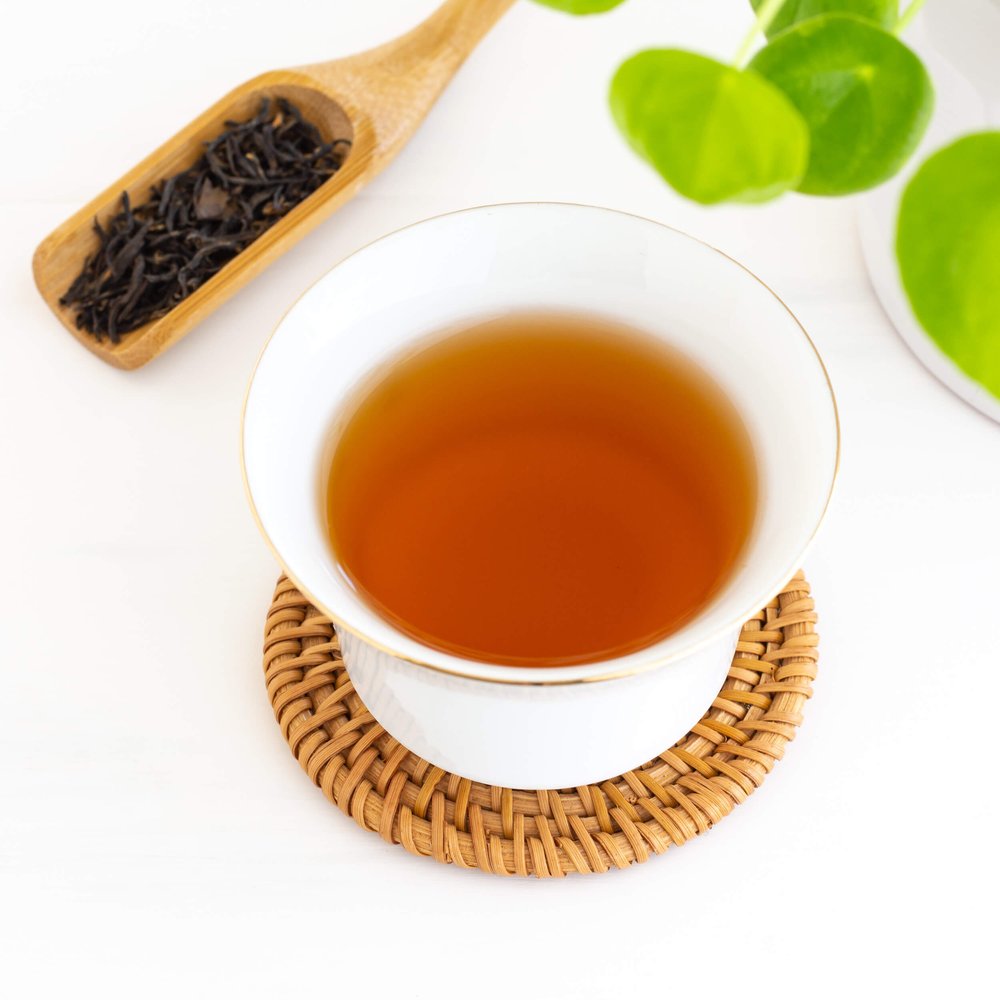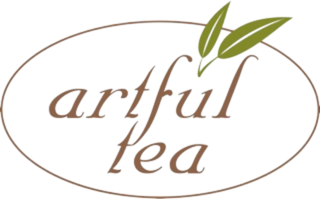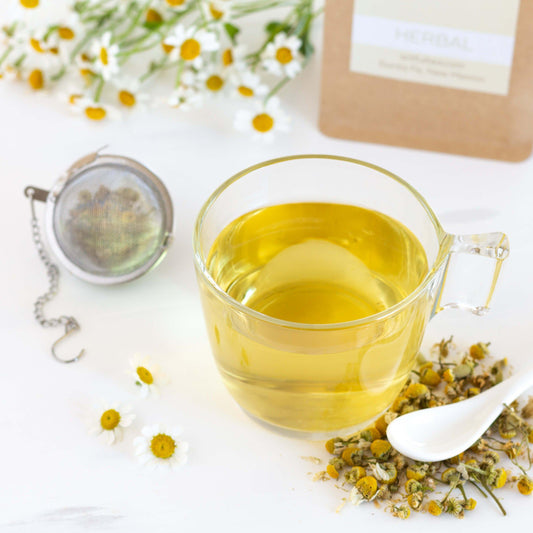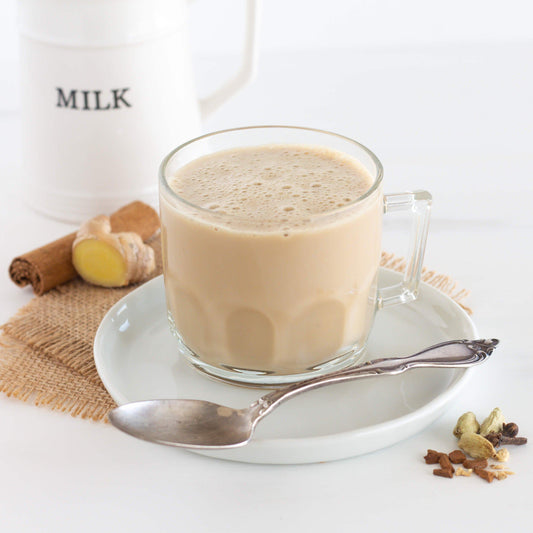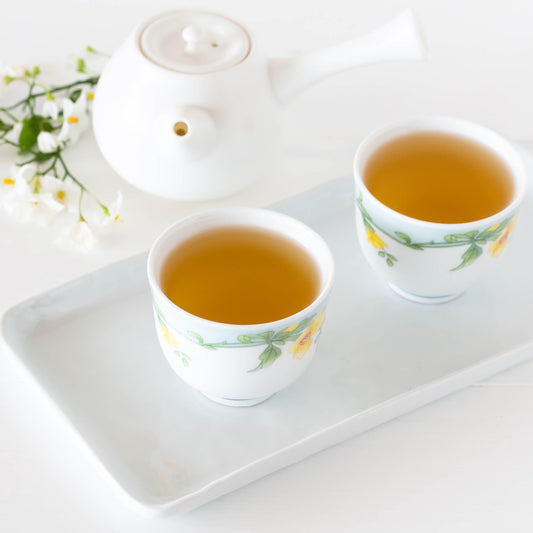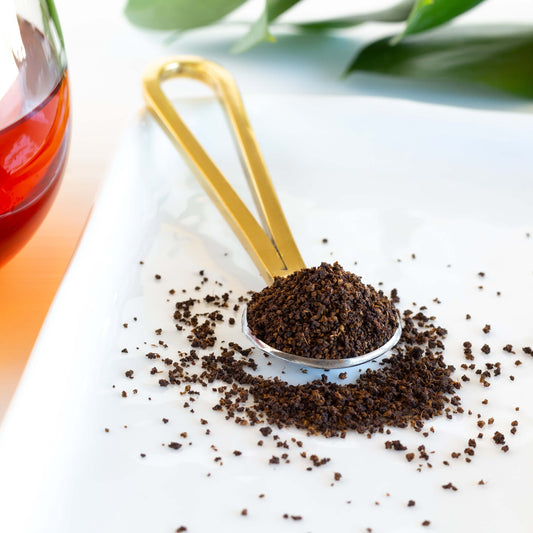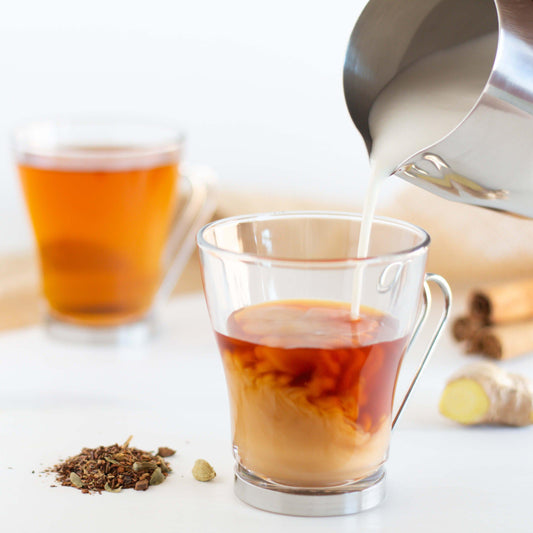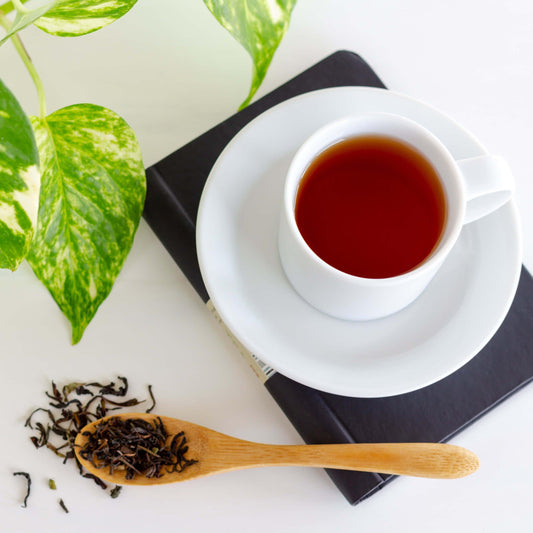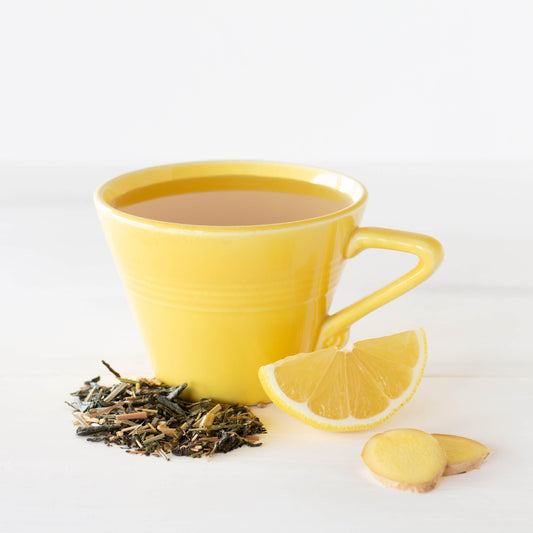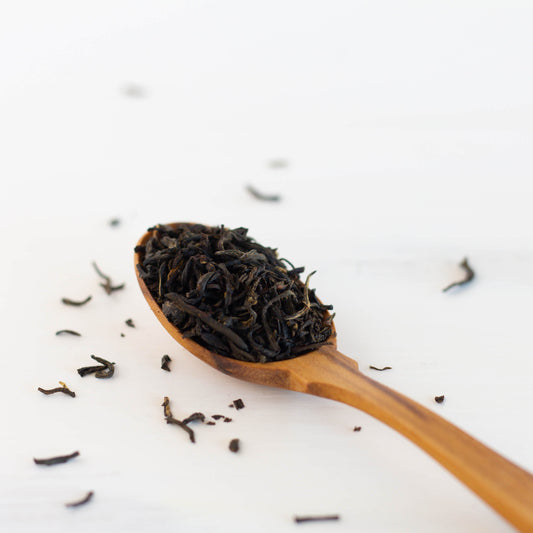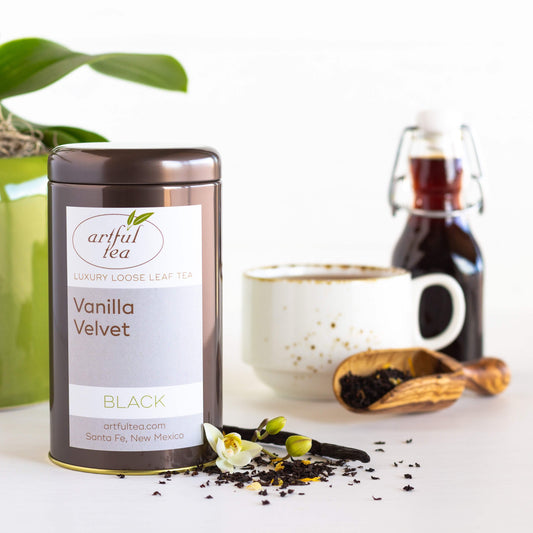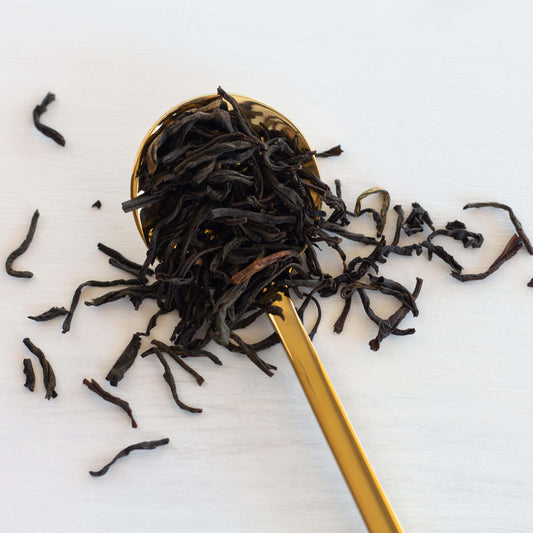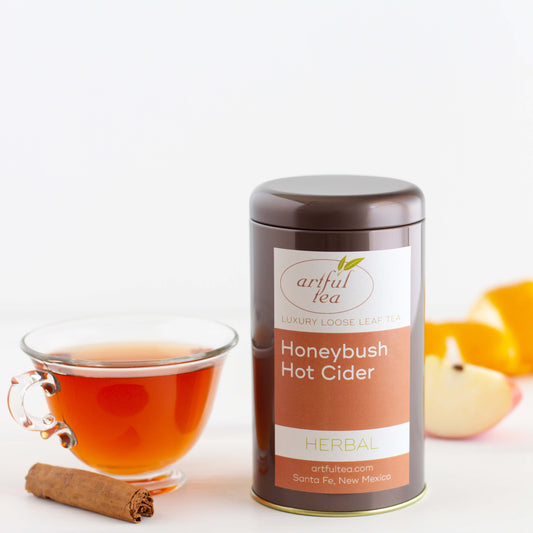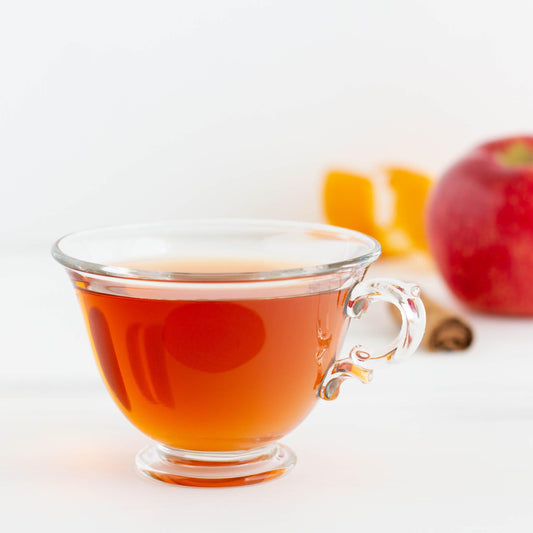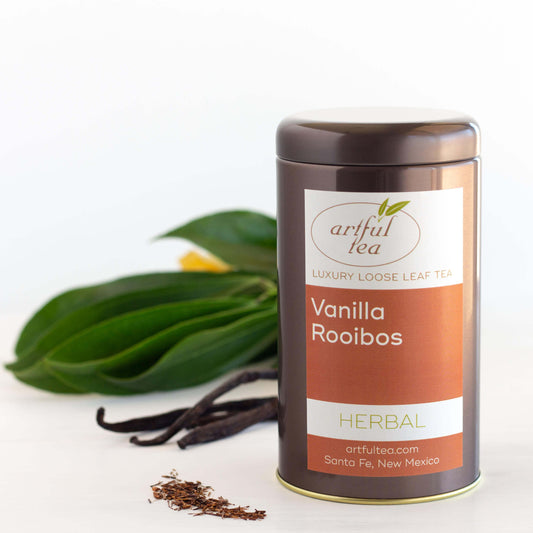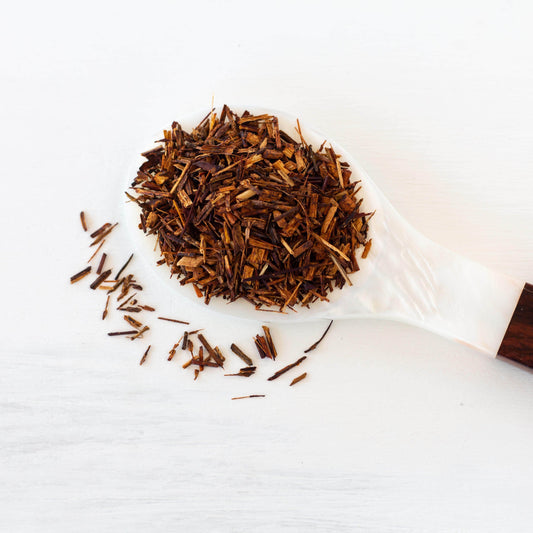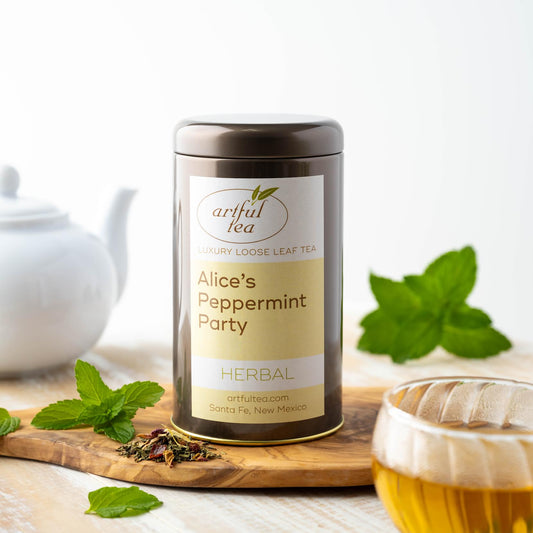Milk tea can refer to a variety of different teas and tea-based drinks from all over the world. At its most simple, milk tea usually means a tea with milk in it - although how these tasty beverages are prepared can vary from country to country and region to region. Milk (and sometimes a sweetener like sugar or honey) is often added to robust black teas in order to reduce astringency and create a mellow, balanced cup of tea.

Types of milk tea
While there are almost as many milk tea recipes as there are tea-drinking countries, there are a few especially common types of milk tea.
A classic cuppa
The British typically take their tea with milk (and occasionally sweetener.) Whether you’re indulging in an afternoon tea ceremony or just brewing yourself up a morning cup, taking tea the British way usually means brewing your tea strong and adding a splash of milk. In Ireland, they sometimes add half and half or cream. You can add sugar or honey to your cup of tea, or drink it with only milk and enjoy the natural sweetness present in the tea. Traditional breakfast blends like Irish Breakfast and English Breakfast are often used for this type of milk tea.
Hokkaido milk tea
Hokkaido milk tea is a unique tea-based beverage that originates from the Hokkaido region of Japan. Although green teas like Sencha and Gyokuro are the most common types of tea consumed in Japan, Hokkaido milk tea is actually made using black tea. This tea usually has a robust base, often Assam or hearty blends like Irish Breakfast. Milk from Hokkaido is added to the tea, which is often then sweetened with honey, caramel, or brown sugar.
Okinawa milk tea
Okinawa milk tea also originated in Japan. It consists of a hearty black tea base blended with milk and Okinawa brown sugar. This special type of brown sugar, also known as kokuto, is made by reducing pure sugarcane juice, and has a complex, nuanced flavor and a high vitamin and mineral content.
Boba (bubble tea)
Boba, often also known as bubble tea or pearl milk tea, is a unique milky tea flavored with tapioca pearls. While boba can be made without milk, milk or condensed milk is often added to the drink. This tea is typically served iced. Boba comes in many different flavors, from classic black tea versions to fruity, floral, or sweet concoctions. Boba originated in Taiwan, but is now popular all over the world.
Hong Kong milk tea
Hong Kong milk tea is made with black tea and evaporated milk or sweetened condensed milk. The tea used is typically a hearty black tea like Ceylon, although aged teas like Pu-erh may also sometimes be used. It originated in Hong Kong, and may have its origins in the introduction of the practice of drinking afternoon tea with milk and sugar under British colonial rule. When using evaporated milk, sugar is often added to sweeten the tea.
Masala chai
Masala Chai also has its origins in British colonization. Drinking tea became popular in India in the late 19th and early 20th centuries, when British colonists began growing tea in India rather than purchasing it from China. Masala Chai soon developed into a popular local drink in its own right, with traditional Indian spices added to black tea for a unique and satisfying drink. Masala Chai can be made by steeping tea and spices directly in steamed milk, or by adding milk to a cup of traditionally prepared tea. You can also make a chai latte by frothing the milk!
Thai tea
Thai tea is made from tea, milk, and sugar. It’s often served as an iced tea, and usually has a base of Assam or Ceylon. Thai tea can be flavored with ingredients including lime, mint, orange blossoms, star anise, tamarind, and other spices. The drink is often sweetened with sugar or sweetened condensed milk.
Tea lattes
Tea lattes are becoming more popular as coffee shops and cafes expand their tea selection and offer more options to customers who may prefer tea over coffee. Tea lattes are typically made using tea and steamed, frothed milk, and are similar to coffee-based lattes. Popular versions of tea lattes include matcha lattes, chai lattes, and London Fog lattes made using Earl Grey tea.
Bonus: Milk Oolong
Milk Oolong is named for the rich, buttery taste it imparts to a cup of tea, so it deserves a mention on this list - even if it doesn’t actually contain any milk in it. Milk Oolong is produced from a special varietal of oolong and is grown mainly at a high elevation in the mountains of Taiwan. Milk Oolong experienced a surge of popularity in the 1980s, but has been highly sought after in recent years as well. The tea leaves are tightly rolled by hand into small balls, which unfurl as the tea steeps. Milk Oolong has a creamy, buttery taste and brews up a lovely golden color with a satisfying finish. While it doesn’t have any milk in it, it really does taste like milk!
The best teas to use for milk tea
Many types of milk tea use a robust black tea as the base before adding milk, sugar, spices, and other ingredients. These black teas tend to have a full body and strong flavor that can stand up to the addition of other things without being lost in the noise. In many cases, milk also helps soften the hearty, slightly astringent character of these teas, resulting in a mellower cup of tea without as much bite.
We don’t usually recommend adding milk to more subtle tea varieties like green, white, and oolong, as their flavors aren’t usually strong enough to stand up to milk. But if you’re interested in using other teas than the ones we recommend, feel free to experiment! A good cup of milk tea is one you enjoy drinking. Some of our strongest black teas include:
Assam
Assam is a robust black tea named after the Assam region of India in which it is grown. It’s a popular tea for use in milk tea because of its full body and malty, spicy notes. Assam is often an ingredient in blends like Masala Chai and Irish Breakfast. Our Assam is graded as FBOP (Flowery Broken Orange Pekoe) and is a second flush.
Ceylon
Ceylon is another hearty black tea that goes well with milk and sweetener. It originates from the country of Sri Lanka, which used to be called Ceylon under British colonial rule. Our Ceylon black tea is a rich, smooth and highly aromatic black tea from Koslanda, Sri Lanka’s premier region for teas. It makes a brisk cup with just a hint of spice.
Nilgiri
Nilgiri is an Indian black tea named after the southern Indian region in which it is grown. Not quite as strong as Assam, Nilgiri still has a full body that stands up well to the addition of milk or sweetener. Nilgiri has notes of honey and stone fruit, and brews up a lovely copper color.
Star of India
Star of India is actually a blend of three different Indian black teas - Assam, Darjeeling, and Nilgiri. This creative blend gains strength and body from robust Assam, a mellow sweetness from Nilgiri, and a hint of astringency from Darjeeling. Star of India is our twist on a traditional “breakfast blend,” and is a great tea base to make milk tea with.
English Breakfast
A classic breakfast tea, English Breakfast contains Ceylon, Assam, and Tanzanian black tea in a balanced, hearty blend with a hint of natural sweetness. English Breakfast is designed to pair well with milk and sweetener, and makes the perfect cozy cup of tea on a rainy day.
Irish Breakfast
Irish Breakfast is a similar blend to English Breakfast, and it also contains Assam, Ceylon, and Tanzanian black tea. Our Irish Breakfast is finely ground, and produces an extremely strong, full-bodied cup of tea with notes of malt and spice. Irish Breakfast is the perfect tea to make a cup of Hokkaido milk tea with, or just to enjoy with a splash of milk and honey.
Vietnamese Golden Tips
Although not as well-known as China and India, Vietnam is an up-and-coming tea producing country. Vietnamese Golden Tips is an excellent example of a quality Vietnamese black tea, with a full body, dry finish, and notes of caramel and burnt sugar. From the Ha Giang Province in northern Vietnam, our Vietnamese Golden Tips is grown and produced at a family-run estate near the Cao Bo mountain, at an elevation of 4,600 feet. This tea is harvested from Shan Tuyet heritage tea trees that are over 50 years old.
Flavored Black Teas
You can also make different kinds of milk tea using flavored black teas. These teas already contain fruits, flowers, and spices added to a black tea base. Popular flavored black teas that go well with milk include Masala Chai, Earl Grey, and Vanilla Velvet.
Matcha
Our culinary grade matcha is perfect for making matcha tea lattes. Culinary grade matcha has a slightly bolder flavor than traditional ceremonial grade matcha, so it can stand up to the addition of milk and cream without losing any of its signature grassy, slightly sweet taste. We recommend sifting your matcha powder before blending it with a small amount of steamed milk to form a thick paste, then gradually adding more milk to taste. Matcha lattes are often sweetened with honey or simple syrup, and you can make a frothy matcha latte using a milk frother or electric whisk.
Bonus: Rooibos Teas
If you want to experiment with milk tea recipes but are trying to consume less caffeine, you may want to give rooibos teas a try. Rooibos is an herb native to South Africa, and is also sometimes called red tea or red bush tea. Although naturally caffeine-free, rooibos has a full body and hearty taste similar to that of a black tea. For use in milk tea recipes, we recommend experimenting with classic Rooibos, Vanilla Rooibos, or Rooibos Chai.
Sweetening your milk tea
Some of the milk teas above include sweetened condensed milk, which already contains sugar and adds a sweet, creamy taste to any tea it's added to. In other cases, milk tea recipes involve a variety of different sweeteners and additions that contribute to the mellow, milky taste of these concoctions. Many people sweeten their tea with a traditional scoop (or two!) of sugar. You can also use honey, brown sugar, caramel, or even maple syrup.
No matter how you take your milk tea, you’ll be sure to wind up with a tasty tea-based drink. Have a unique milk tea recipe? Feel free to share in the comments - we love learning about how our friends and customers prepare their tea!
